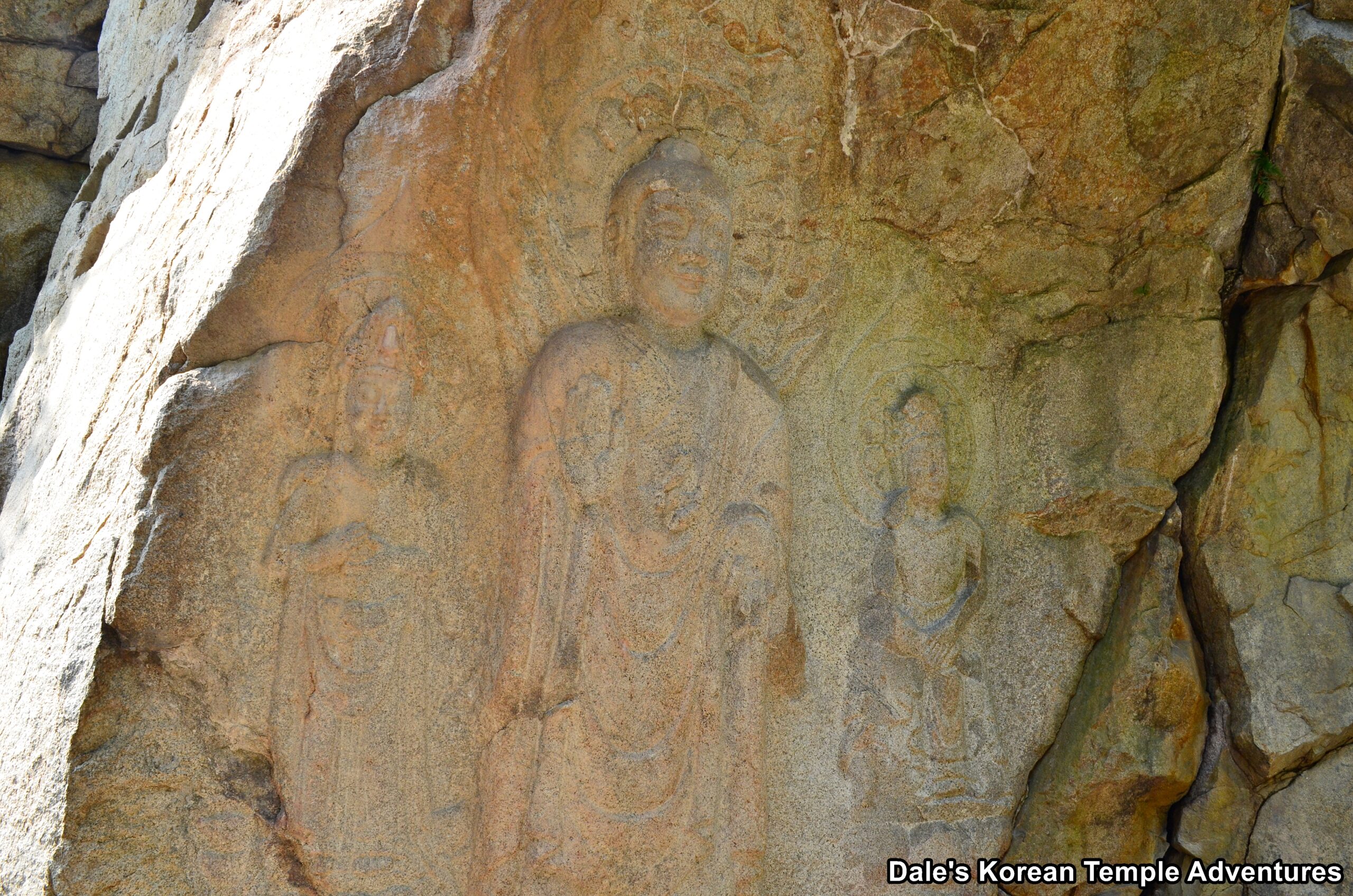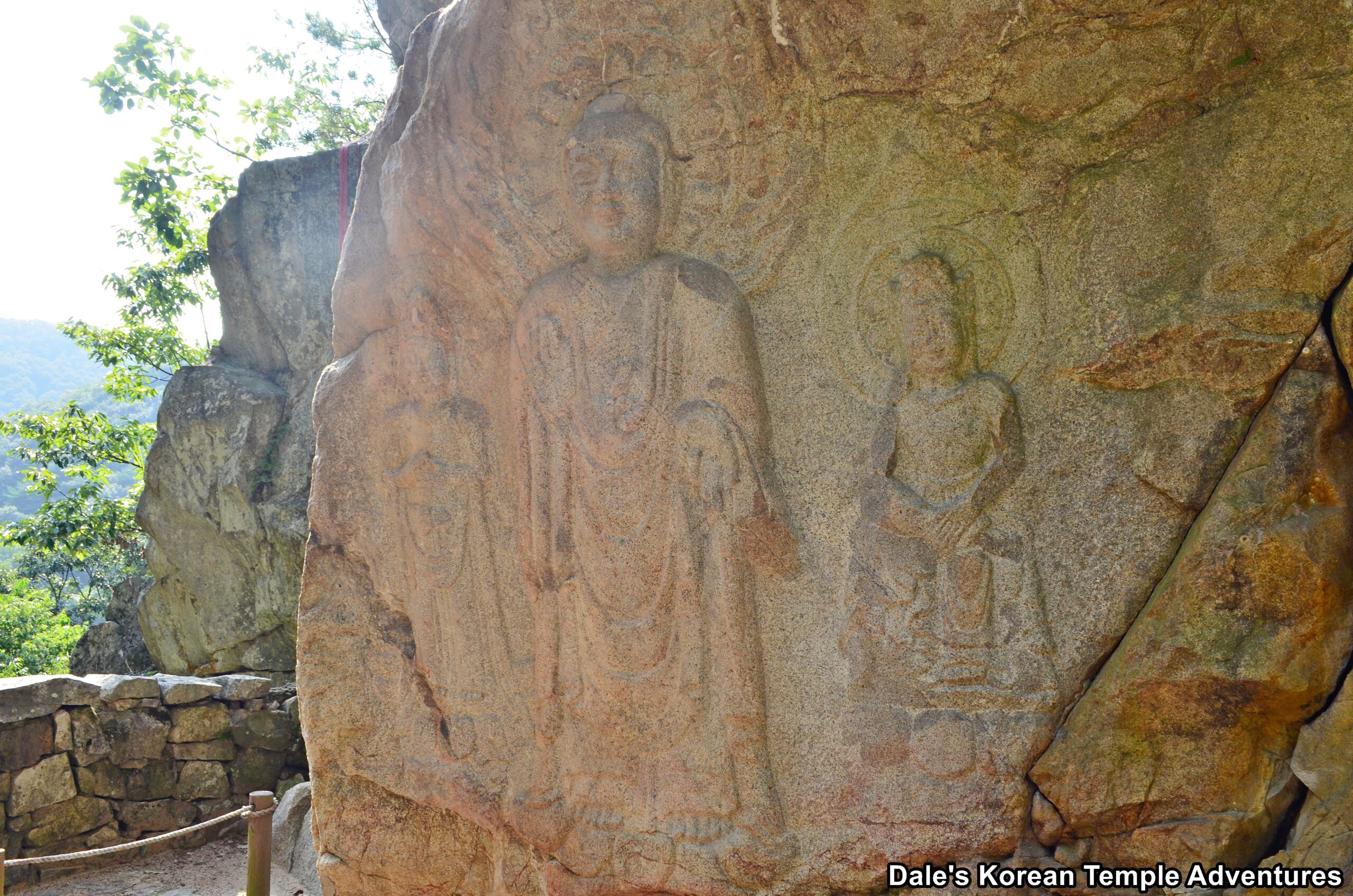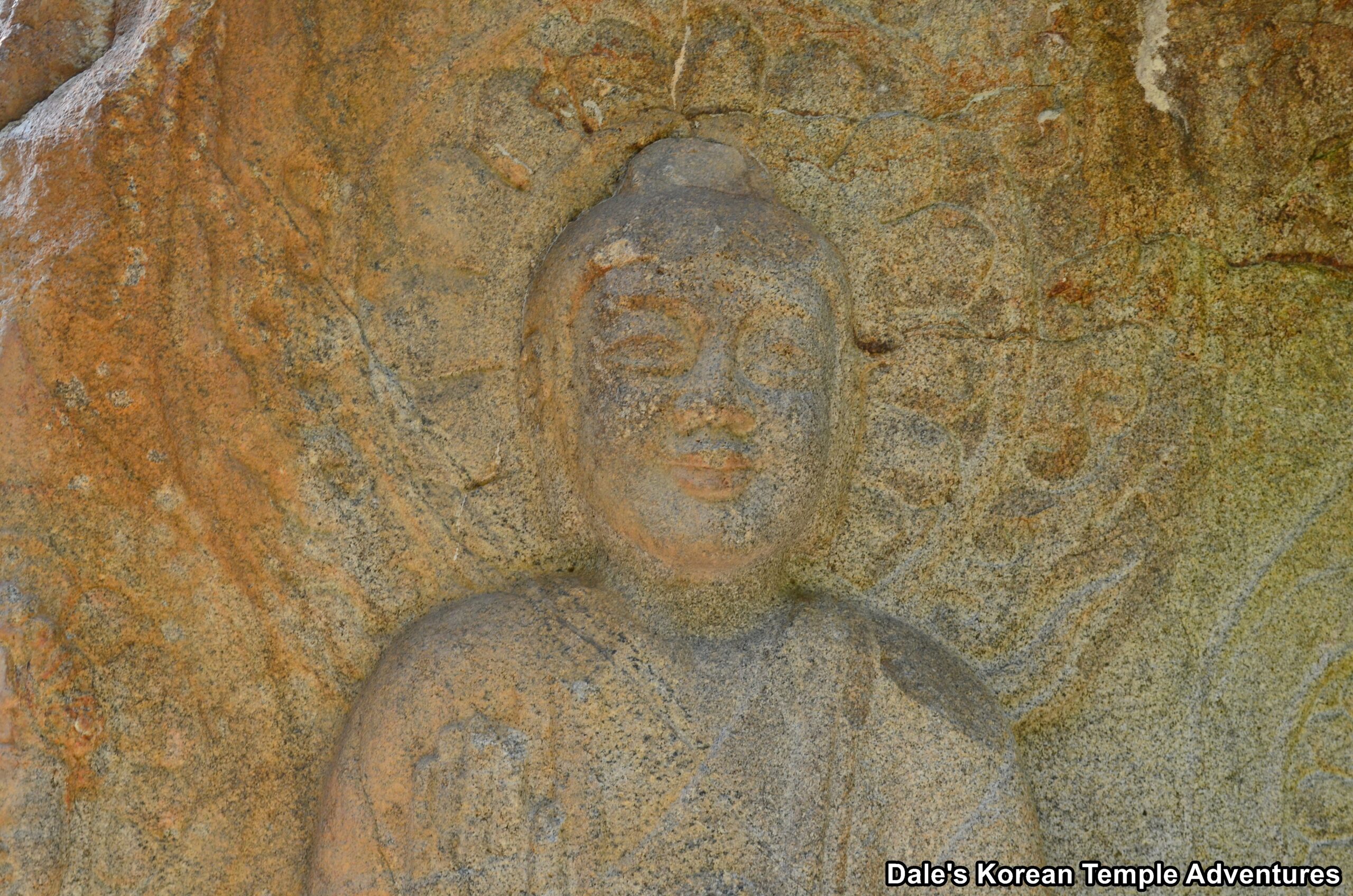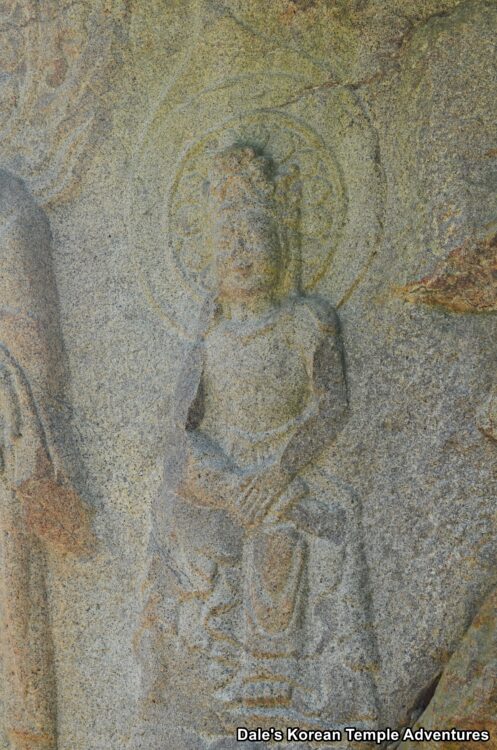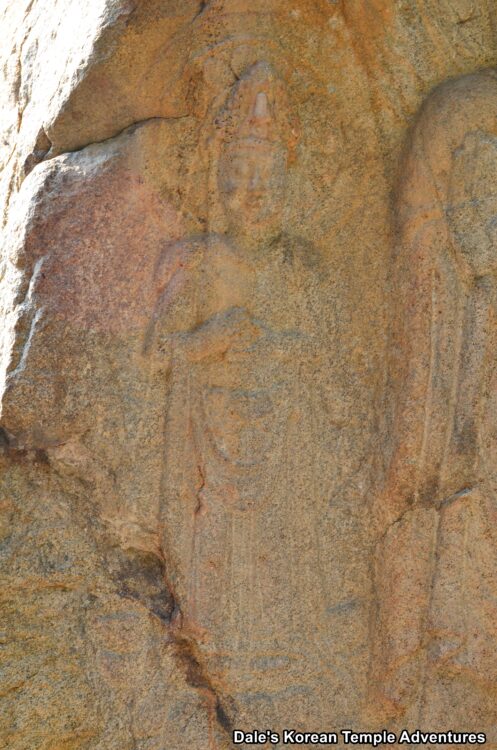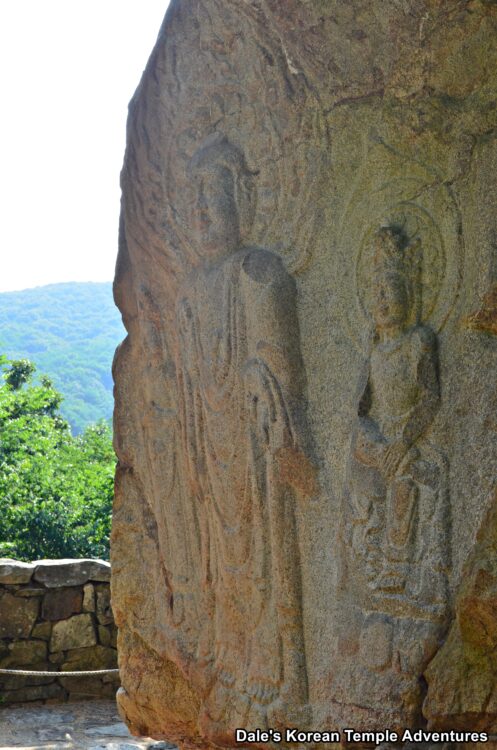The Rock-Carved Buddha Triad in Yonghyeon-ri – 용현리 마애여래삼존상 (Seosan, Chungcheongnam-do)
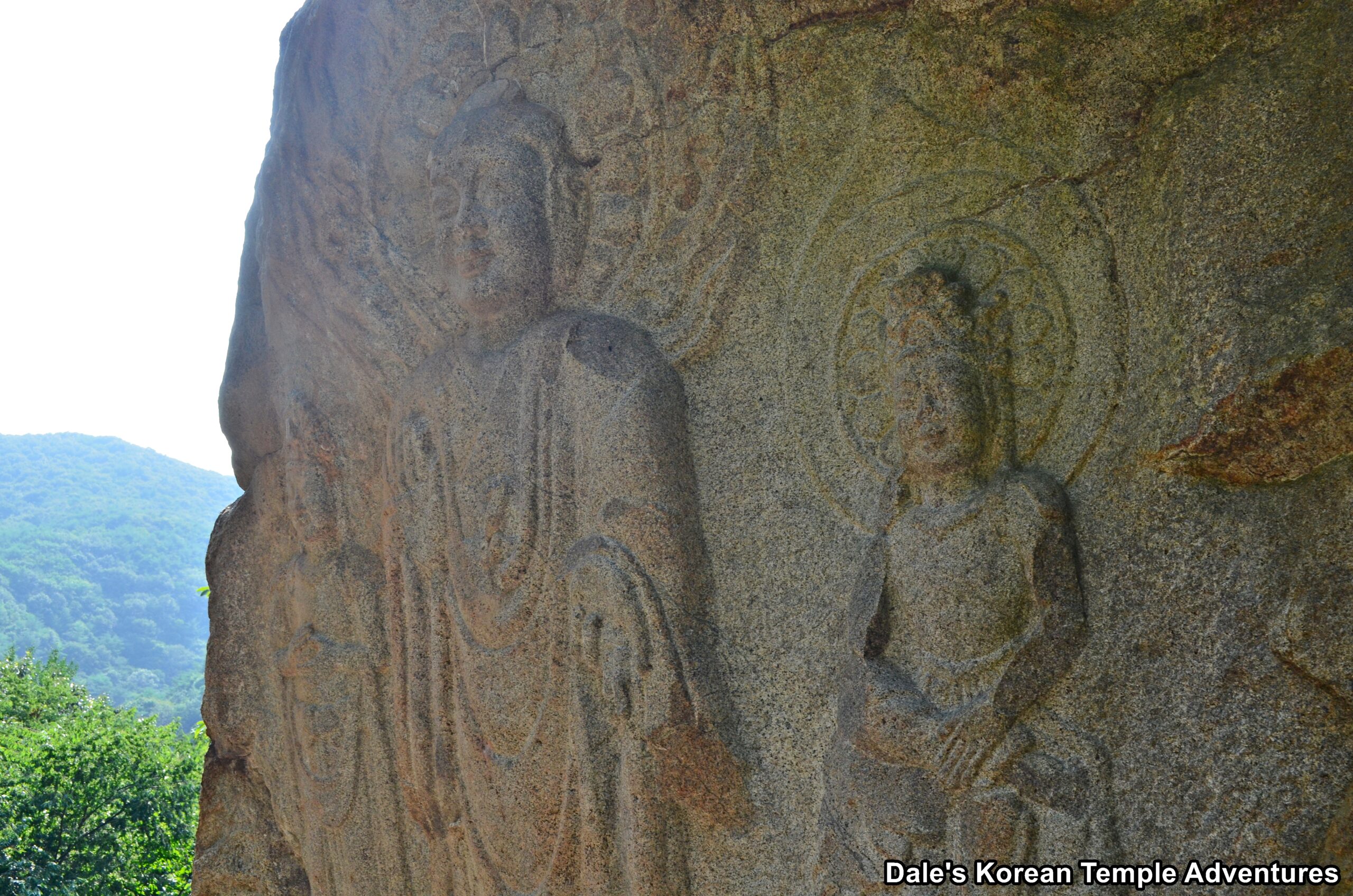
The History and Design of the Rock-Carving
The Rock-Carved Buddha Triad in Yonghyeon-ri, or the “Smile of Baekje” as it’s unofficially known, is located in eastern Seosan, Chungcheongnam-do up a long valley on the northern side of Mt. Gayasan (678.2 m). You first make your way up a side-winding set of stairs that both span a stream and climb the side of a mountain, which makes it easier to visit the historic site.
The Rock-Carved Buddha Triad in Yonghyeon-ri, which stands 2.8 metres in height, is comprised of a triad that consists of the central image of Seokgamoni-bul (The Historical Buddha). This image is joined on either side by two Bodhisattvas (one standing and the other seated in a meditative pose). Overall, the rock-carved triad is better preserved than others of similar age because of its location under a rock ledge that protected it from the elements. The central image of Seokgamoni-bul stands atop a lotus pedestal. The body of the central Seokgamoni-bul wears a thick robe that helps create several U-shaped folds in the front of his apparel. His head is surrounded by a lotus nimbus; and this lotus nimbus design, in turn, is surrounded by a fiery pattern. The image of Seokgamoni-bul has a plump face with heavy brows and almond-shaped eyes. As for its facial features, Seokgamoni-bul has a flat wide nose and smiling lips, which contributes to the name of the statue being known as the “Smile of Baekje.” The other important facet of this name for the rock-carving is the location and date of the image. Seosan, Chungcheongnam-do was part of the historic Baekje Kingdom (18 B.C. – 660 A.D.). Because of the carving’s location between the Taean Peninsula and the city of Buyeo, the area was a key strategic part that linked Baekje in the southwest of the Korean Peninsula with the eastern coast of China which facilitated cultural and financial exchanges. Additionally, and there is some conjecture here, it’s believed that the Rock-Carved Buddha Triad in Yonghyeon-ri was first carved in the late 6th century to early 7th century.
The Bodhisattva standing to the left of the central Seokgamoni-bul carving, as you face it, is Yeondeung-bul (The Past Buddha). This image stands with chubby cheeks that are filled with a tranquil smile. Yeondeung-bul also wears a ornate crown. This carving of the Past Buddha doesn’t wear anything in the upper portion of their body except jewelry around his neck. The lower garment that Yeondeung-bul wears is draped low to cover his feet.
The Bodhisattva standing to the right of the central image of Seokgamoni-bul, on the other hand, is that of Mireuk-bul (The Future Buddha). This image of Mireuk-bul is seated in a contemplative pose. It, too, has a plump, smiling face. Unfortunately, this image is damaged with parts of both arms being harmed. The right leg of Mireuk-bul is crossed over that of the left. The left hand is gently placed over the right ankle and the fingers of the right hand are touching his right cheek.
This is a rare triad of Buddhas to have together because of the image of the pensive Mireuk-bul. By having these three Buddhas together in one triad depicting the past, present, and future Buddhas, it’s thought to come from the Avatamsaka Sutra (The Flower Garland Sutra), which is one of the most influential texts in Mahayana Buddhism to which Korean Buddhism belongs.
The Rock-Carved Buddha Triad in Yonghyeon-ri was discovered by accident while the neighbouring Bowonsa-ji Temple Site was being investigated in 1959. The Rock-Carved Buddha Triad in Yonghyeon-ri was named a National Treasure in 1962, and it’s National Treasure #84.
How To Get There
To get to the Rock-Carved Buddha Triad in Yonghyeon-ri from the Seosan Intercity Bus Terminal, you’ll need to take Bus #483. You’ll need to get off at the “Yonghyeon 2-ri hacha – 용현2리 하차” stop. You’ll then need to stay on the bus for 37 stops, which will take an hour and five minutes. From where the bus drops you off, you’ll need to walk ten minutes, or 645 metres, to the south. The signs should guide you along the way.
Overall Rating: 7/10
The Rock-Carved Buddha Triad in Yonghyeon-ri is a wonderful example of late-Baekje Buddhist artistry. All three images are wonderful examples especially the jovial central image of Seokgamoni-bul (The Historical Buddha), for which the carving unofficially earned the name of the “Smile of Baekje.” Adding to this beauty is the pensive image of Mireuk-bul (The Future Buddha) and the commanding view that the Rock-Carved Buddha Triad in Yonghyeon-ri enjoys from the heights of Mt. Gayasan.
